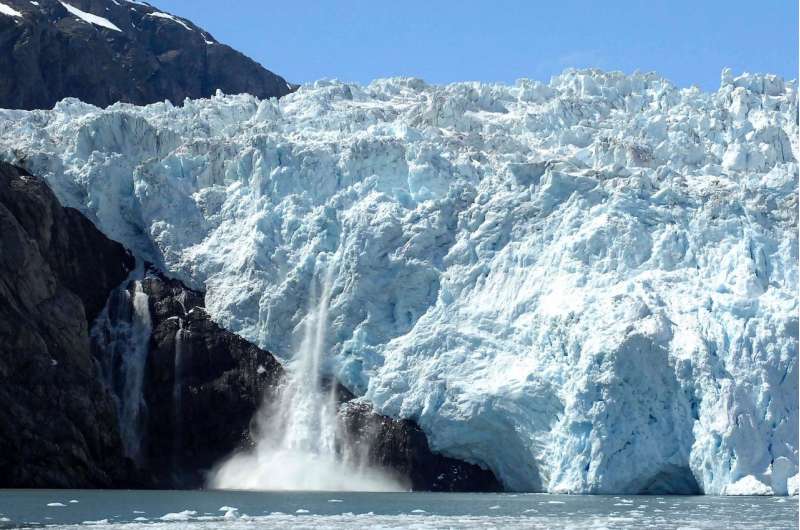This article has been reviewed according to Science X's editorial process and policies. Editors have highlighted the following attributes while ensuring the content's credibility:
fact-checked
trusted source
proofread
Four decades of glacial data reveals substantial losses and water worries

An analysis of glacial data spanning four decades has provided valuable insights into the changes taking place in the glaciers of the Pir Panjal range within the Kashmir basin in India. The research, published in the International Journal of Hydrology Science and Technology, analyzed data for the period 1980 to 2020.
It reveals significant losses in glacial mass and points out just how important this could be for the people and ecosystems that rely on the melt waters from these glaciers. It also highlights the flood risks associated with sudden catastrophic changes in the glaciers as they melt.
Mohmad Ashraf Ganaie and Syed Kaiser Bukhari of the National Institute of Technology Srinagar, Jammu and Kashmir, India, identified 122 glaciers that by 2020 had decreased notably in size since 1980. For example, a glacial region of almost 26 kilometers in 1980 had shrunk to just under 16 square kilometers by 2020. One particular glacial watershed, Vishaw, which encompasses 55 glaciers, had lost more than 6 square kilometers.
Topography plays an important role in how rapidly glaciers have receded during this period of time. The smaller glaciers, those less than or equal to 0.5 square kilometer, were found to be receded faster than the bigger glaciers. Moreover, south-facing glaciers and those at lower elevations demonstrated too were receding more rapidly, the team found. The different rates of glacial loss suggest that there are many complex factors at play.
The Himalayan glaciers are a vital source of water for those in their shadow. They play a major role in sustaining river flow and supporting human activities such as agriculture and hydroelectric power generation, as well maintaining the natural, local ecosystems, wildlife, and habitats. The impact of glacial loss will be gradual, but with accelerating loss due to climate change there is the risk of melted glacial lakes suddenly release huge volumes of water downstream, which could devastate human settlements and the ecosystems in its path.
Historically, there have been limited numbers of remote sensors and monitoring of the glaciers in this region. There is now a pressing need to understand the changes taking place and the effect these changes will have on water resource management, flood risk, and the local environment.
More information: Mohmad Ashraf Ganaie et al, Inventory and status of glaciers in the Pir Panjal Range Kashmir basin between 1980 and 2020, International Journal of Hydrology Science and Technology (2024). DOI: 10.1504/IJHST.2024.137781
Provided by Inderscience



















